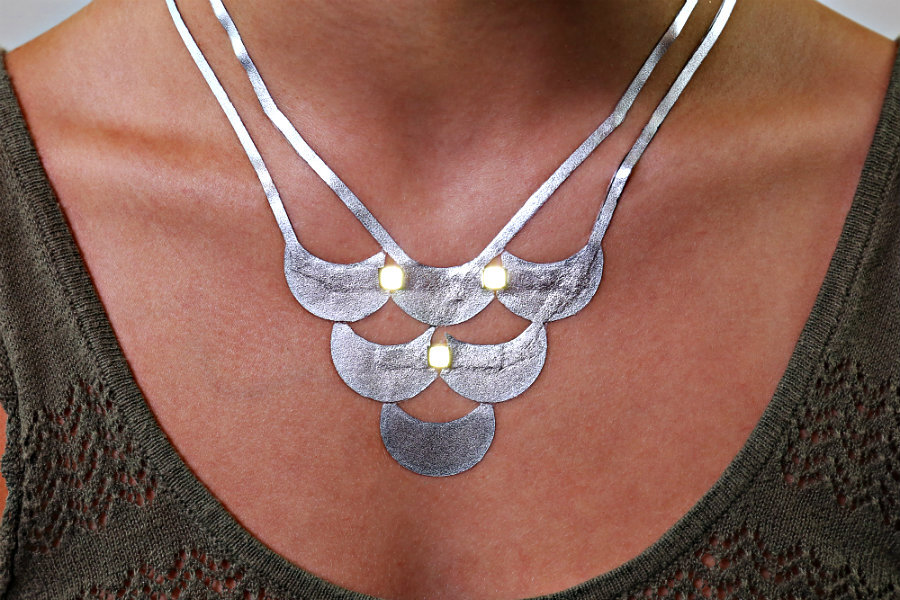Tattoo tech: Why put a circuit board on your body?
Loading...
It may seem like something out of a science fiction movie, but recent developments by the MIT Media Lab and Microsoft Research could soon mean that we could interface with wireless devices, simply by touching our skin.
Wearable technology is becoming lighter and easier to use than ever. While wearable interfaces such as the Apple Watch were groundbreaking just a few years ago, DuoSkin's new temporary tattoo is bringing technology into even greater harmony with our daily lives.
DuoSkin was inspired by recent jewelry trends, said MIT PhD student Cindy Hsin-Liu Kao. Metallic tattoos, she says, are a way for people to seamlessly integrate fashion with functionality.
How is it possible? Gold.
“Building such small and skin-friendly devices currently requires expensive materials and equipment that is mostly found in the medical domain,” DuoSkin’s creators write. But gold leaf "is skin friendly, robust for daily wear, and user friendly in fabrication.”
The gold leaf tattoos, developed by a partnership between the MIT Media Lab and Microsoft Research, are crafted from low tech processes. According to Tech Crunch, the designers used ordinary desktop graphic software to create the design, then fed the design through a vinyl cutter and layered gold leaf on top. Embedded electronic components allow the tattoo to connect to devices. After that, just apply it to skin.
Although many groups have made progress with epidermal electronics, or devices that are wearable on the skin, most of these devices are far too expensive to be practical for everyday wear, say DuoSkin’s creators. For this reason, most epidermal devices are intended for medical or physical monitoring, such as a new e-skin development that The Christian Science Monitor reported on in April, which would allow epidermal devices to carry LEDs for medical purposes.
While some products, such as iSkin, are being developed for daily wear, they require expert grade materials that price them out of popular use.
Unlike these other products, DuoSkin’s creators say that their product “closes the gap” between functionality and affordability, allowing their product to be used for recreational tasks.
For example, one tattoo that researchers created was shaped like a bracelet made of a strand of butterflies. Each “butterfly” represented its own button, through which the wearer could control music streaming to a mobile device.
DuoSkin researchers found that consumers prefer wearable technology that doesn’t look like technology, such as natural-looking clothing instead of clothing that features digital displays.
The temporary tattoos are intended to meet that preference, allowing users to choose the shape, color, and placement on their body.
DuoSkin has a plethora of other applications, including temperature-sensing and mood-communicating designs.
As each wearer can design her own tattoo, DuoSkin “serves as the bridge between the physical and digital realms," say the researchers, "enabling users to leverage the personal aesthetic principle that is often missing in today’s wearable tech.”








